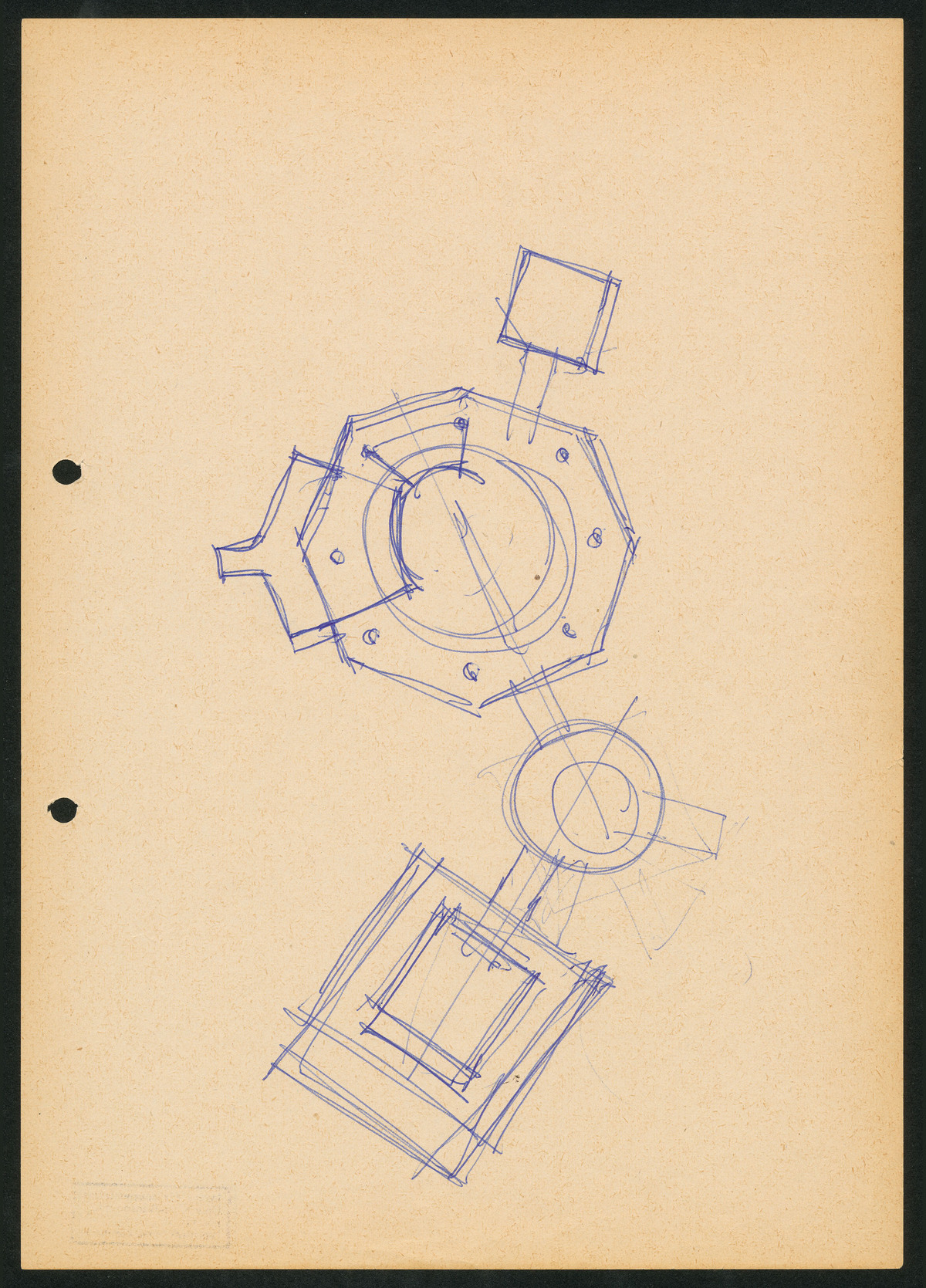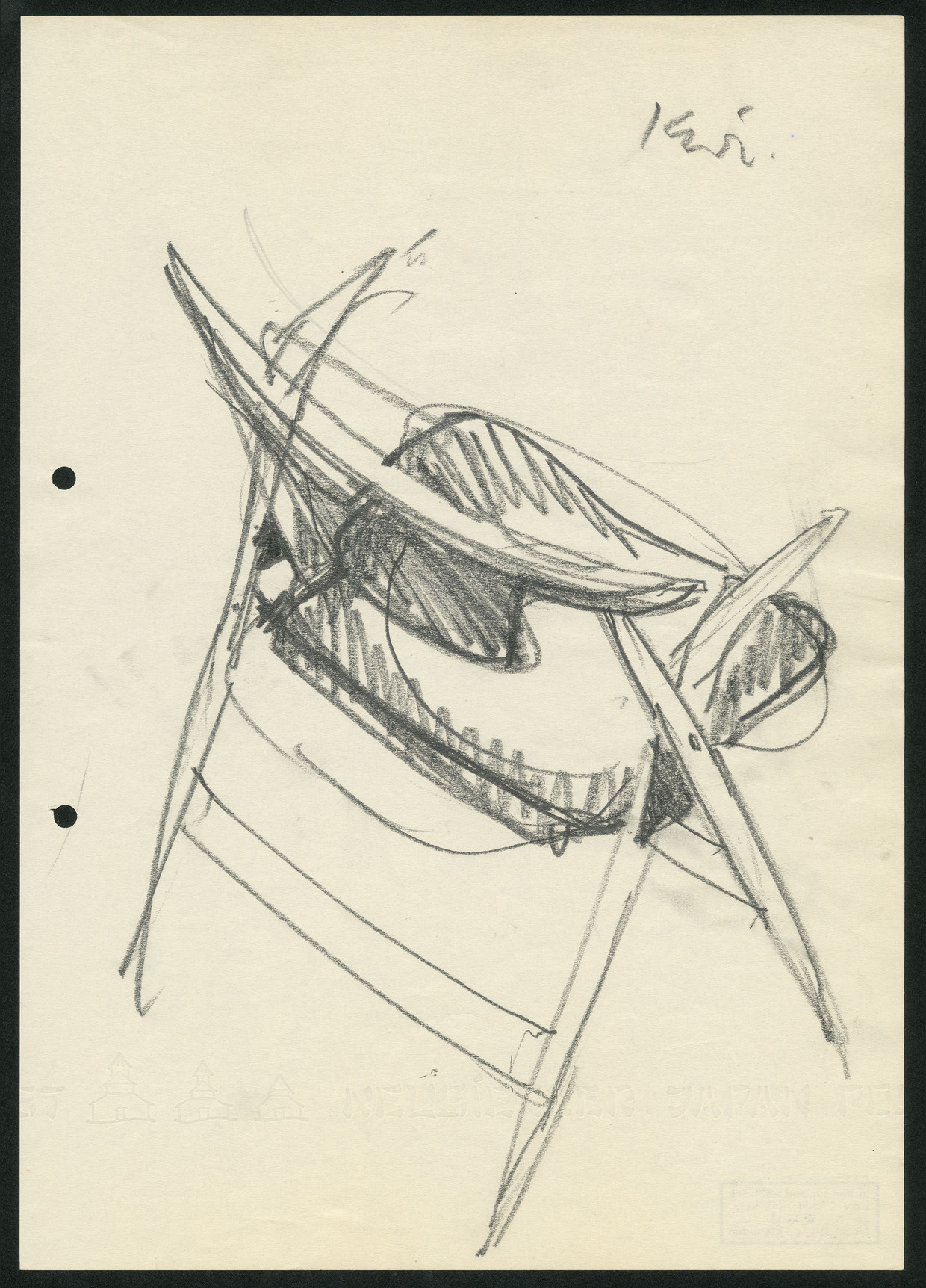Project "Egon Eiermann digital" at saai
Egon Eiermann (1904-1970) is considered one of the most important architects of the 20th century. In 1947, Eiermann followed a call to the Faculty of Architecture at the Technical University of Karlsruhe, today's KIT, as a professor. As a long-time holder of the chair of architecture, he shaped the profile of the university for a long time and, as an important architect of post-war modernism, established his own influential tradition from Karlsruhe:
Already with his first projects in Berlin in the 1930s he made a name for himself as a progressive architect. After the Second World War he set an architectural sign for the still young post-war Germany with the handkerchief weaving mill in Blumberg. With the pavilion for EXPO 58 in Brussels, he and Sep Ruf erected the first representative building of the Federal Republic of Germany at an international exhibition. With the Kaiser Wilhelm Memorial Church he built a landmark for West Berlin. In the 1960s, Eiermann erected two further buildings, the German Embassy in Washington and the parliament building in Bonn, which shaped the external image of the Federal Republic of Germany for a long time. But he also created groundbreaking buildings for business. To mention only his iconic department stores for Merkur, the IBM pavilions in Stuttgart and the Olivetti Towers in Frankfurt/Main.
Preserving cultural heritage and making it accessible - The "Egon Eiermann digital" project
Together with the saai Southwest German Archive for Architecture and Engineering at KIT, the Egon Eiermann Gesellschaft e.V. has set itself the task of preserving Egon Eiermann's life's work and making it accessible to science both nationally and internationally. The cooperation project "Egon Eiermann digital" was initiated.
The archive of Egon Eiermann's works preserved in the saai is one of the most important national and international architectural bequests. The total volume amounts to over 50,000 archive documents, consisting of plans, glass plates, 35mm and large format negatives and vintage prints. In addition, there are 75 linear metres of files and about 50 pieces of furniture.
Since the founding of the saai, Egon Eiermann's archive of works has been one of the most sought-after holdings in the archive. Public interest in Egon Eiermann's oeuvre as a central figure in the building industry after the Second World War has increased significantly in recent years. Both the worldwide networking and the focus of architectural history and monument preservation on post-war modernism play a major role here.
Aim of the project
The public and research community are increasingly demanding that archives digitise their archive materials and make them available online. The project "Eiermann digital" thus not only facilitates the effectiveness of the archival handling of the materials, but also considerably increases national and international research on the work of Egon Eiermann. "Egon Eiermann digital" therefore pursues the systematic digitisation and digital provision of archival sources from the archive of Egon Eiermann's works, taking into account the technical possibilities as well as the respective copyright.
What is being done?
The process of digitalising archive materials comprises four phases:
- the professional, restorative screening or cleaning of all archive materials.
- professional digitising in the best possible quality.
- professional indexing and manual indexing of each individual digitised material with information on project name, place, year, participants, etc.
- the implementation of all indexed digital copies in a database.
About the saai | Southwest German Archive for Architecture and Engineering at KIT
The saai | Südwestdeutsches Archiv für Architektur und Ingenieurbau is one of the most comprehensive and important architectural collections in Germany. The holdings include over 530,000 plans, drawings and sketches, 680,000 photographs, film and sound documents, 1,100 linear metres of building files, 900 models, 50 pieces of furniture and 400 linear metres of specialist journals and books. The oldest documents date from around 1700, with the emphasis on the 20th century, especially the second half of the century. The saai is home to the work archives of Egon Eiermann, Otto Ernst Schweizer, Fritz Leonardt, Günter Wilhelm, Carlfried Mutschler, Rolf Gutbrod, Reinhard Gieselmann, Otto Herbert Hajek, Frei Otto and Günter Behnisch, among others.
The collection is based on a historical stock of the architecture department of the former Polytechnic School Karlsruhe, today's KIT | Karlsruhe Institute of Technology. Since the 1970s, the collection has been expanded through donations of important and extensive bequests from contemporary architects. Finally, the saai is founded in 1989 by decision of the government of Baden-Württemberg. Since 2014 it has been managed by the head of the Department of Architectural Theory, Prof. Dr. Georg Vrachliotis.
Further information on the saai | Southwest German Archive for Architecture and Engineering at KIT is available at: https://www.saai.kit.edu/
About the Egon Eiermann Society
In November 1997, building historians, architects, friends, students and former employees founded the Egon Eiermann Gesellschaft - (EEG) e.V. with its headquarters in Karlsruhe, in the interest of preserving the complete works of Egon Eiermann. The society is committed to the preservation of the life's work of Egon Eiermann, one of the most important German architects of the 20th century, especially the preservation of the buildings he designed.
By supporting exhibitions, symposia, documentations and also by providing advisory support for the renovation and conversion of existing buildings, the Eiermann Society aims to preserve them in good condition for posterity and to spread knowledge of the work, especially among the younger generation. This task seems particularly urgent for Eiermann's early work in the new federal states.
To achieve this goal, the Egon Eiermann Society recruits members and sponsors. The society does not work profit-oriented and does not think entrepreneurially.
Further information about the Egon Eiermann Gesellschaft e.V. under: http://egon-eiermann-gesellschaft.de/hp1/profil.htm?ITServ=aivqgrfffiqlclj79h9053cuash
The KIT Foundation thanks the sponsors of this project.


